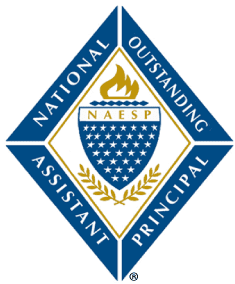
Nicole Cockrell
Mannsdale Upper Elementary School
Madison, Mississippi
ncockrell@madison-schools.com
Best Practices
1) As an Assistant Principal, I aim to support the programs in place at our school. The instructional practice that has made the most significant change in the culture of our building is Instructional Coaching. My principal and I are in classrooms every day. We intentionally plan our week and send out a calendar so that our teachers know when we will come and see the marvelous teaching strategies they are implementing in their classrooms. We include when they meet in our office to discuss the observation and provide feedback. This feedback is geared towards the teachers’ goals for themselves. My principal and I created a form to address the areas we wanted to direct our feedback conversations around. This includes the teachers telling what they feel is a strength they possess. This has been the hardest part for the teachers. We found they were more critical of themselves. When we began, they could not give us strengths. The form also allows them to discuss the areas of their teaching they want to set goals towards. These goals range from classroom management to completing National Boards. The teacher often sets these goals. On rare occasions, we target areas I find they need to work on as the administrator. This Instructional Coaching process has allowed us to discuss curriculum in a professional learning capacity with teachers that formal observations do not provide.
We have studied The Rutherford Learning Group’s Developing the Artisan’s Teacher method. This method outlines finding the teacher’s strength and building on that strength. With that, when doing an observation, we leave ‘happy notes’ with the teacher that address the 23 themes of teaching talent outlined in The Rutherford Learning Group. This process allowed our teachers to move from thinking we were out to catch them doing something wrong to a mindset of encouragement and growth. This process has allowed us to address parent concerns from the teacher’s viewpoint because we are in the classrooms so often. Instructional Coaching has allowed us better to understand the needs of our school and the teachers.
2) At Mannsdale Upper Elementary School, we focus on how to grow our teachers and provide them with the most relevant professional development. We are not a Title I school; therefore, we cannot send our teachers to many popular professional development sessions. This has allowed us to focus on professional development. We spend numerous hours researching strategies to implement with our teachers to provide them with meaningful professional development. I always focus on improving our school’s culture for our students and staff.
We started the school year with rotations that allowed our students to focus on writing with our literacy specialist, math routines and games with our math specialist, data talks with our principal, and building student relationships with me. This session allowed me to start the year by speaking with teachers about proven strategies to enable teachers to develop meaningful relationships with their students from the first day of school. They were provided with interest inventories to share with their students and parents. This professional development aimed to have these discussions before teachers deal with difficult student behavior.
Teachers only value professional development if they feel they can use it. As a common practice, we develop our PD to align with what is happening within our school. We provide time to discuss the data after a benchmark assessment. These data talks are in-depth, and we focus on what went well and what we need to change to assist our students in mastering the standards. My principal and I spend time before meeting with our teachers to analyze the data and understand what standards were tested that were not covered and which are traditionally not mastered during this time of the year. We look for anomalies before we have a PD on the data. We like to walk into the PD prepared to answer questions and dispel excuses.
Like past school years, we have spent this school year doing a book study. This year’s book study has been on the 10 Mindframes for Visible Learning: Teaching for Success. This book study has provided our teachers with strategies to make learning visible. I used a chapter from this book during my back-to-school PD on building relationships. We also use the content from the text when giving feedback to our teachers. This book has tied into all our professional development this school year. My principal and I believe that students must build knowledge to succeed. If we make learning visible as educators, we will ultimately build knowledge within our students, and every student will be proficient in their grade level.
My principal and I think that to be instructional leaders, we must continue to grow through professional development. If we constantly learn, we can provide our teachers with the needed strategies to develop our students. Professional development is the set of tools, resources, and training sessions for educators to improve their teaching quality and effectiveness. These resources allow instructors to further their knowledge in their subject area and allow for mentorship and the opportunity to learn new teaching techniques.


